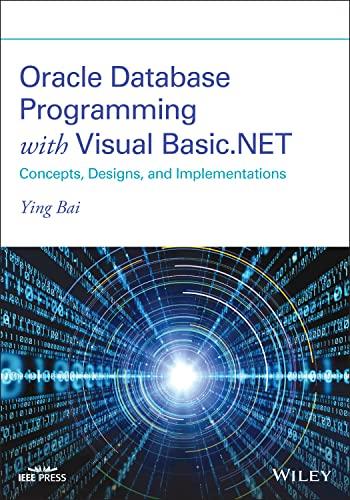Answered step by step
Verified Expert Solution
Question
1 Approved Answer
please write this in c language Objective: Develop a multithreaded program that simulates the operations of a restaurant. This simulation will model the interactions between
please write this in c language
Objective:
Develop a multithreaded program that simulates the operations of a restaurant. This simulation will model the interactions between customers, waiters, and cooks, and manage the allocation of tables and food orders. The goal is to create a system that efficiently handles customer requests, ensures smooth operations, and avoids common concurrency issues such as race conditions and deadlocks
Background:
Multithreading: The ability of a program to execute multiple threads concurrently, allowing for the simultaneous processing of multiple tasks. This is crucial for applications that require handling multiple requests or operations at the same time.
Race Conditions: Occur when two or more threads access shared resources simultaneously, leading to unpredictable outcomes. In the context of our restaurant simulation, this could happen when multiple customers attempt to reserve the same table.
deadlocks: A situation where two or more threads are unable to proceed because each is waiting for the other to release a resource. For example, a waiter waiting for a cook to prepare an order, and a cook waiting for a waiter to deliver the order
Project Requirements:
Restaurant Environment:
o The simulation should include a main program that initializes the restaurant environment, including tables, waiters, and cooks.
o The restaurant should be able to handle a specified number of customers, tables, waiters, and cooks.
Customer Behavior:
o Customers arrive at random intervals.
o Each customer requests a table and orders food once.
o The time it takes for a customer to place an order and eat it should be simulated.
Waiter and Cook Operations:
o Waiters take orders from customers and bring food to the tables.
o Cooks prepare the orders.
o The time it takes for waiters to process orders and cooks to prepare food should be simulated.
Synchronization and Concurrency Control:
o Implement synchronization mechanisms to prevent race conditions and deadlocks.
o Ensure that customers wait for a table to become available and that waiters and cooks wait for resources to be available before proceeding with their tasks.
Output and Monitoring:
o The simulation should periodically display the status of tables, waiters, cooks, and customer queues.
o This information should be updated every seconds.
Deliverables:
A complete C or Java program that simulates the restaurant operations as described. C offers more control and efficiency, but requires manual memory management and complex error handling. It's suitable for projects where performance is critical. Java provides builtin support for objectoriented programming, concurrency, and memory management, making it easier to implement complex multithreaded applications. It's ideal for projects where ease of development and code maintainability are priorities. It is up to you to choose C or Java language to implement this project.
A detailed report explaining the design and implementation of the program, including the use of multithreading, synchronization mechanisms, and how they address race conditions and deadlocks.
Evaluation Criteria:
Correctness: The program should accurately simulate the restaurant operations without errors.
Efficiency: The program should efficiently manage resources and handle customer requests.
Synchronization: The program should correctly implement synchronization mechanisms to prevent race conditions and deadlocks.
Documentation: The report should clearly explain the design and implementation of the program.
Note: This project aims to provide a practical understanding of multithreading, concurrency control, and the challenges of managing shared resources in a concurrent environment.
Let's walk through a simplified example of how the restaurant simulation program might work. This example will focus on a smallscale scenario to illustrate the interactions between customers, waiters, and cooks, as well as the management of tables and orders.
Scenario Setup
Tables: tables available.
Waiters: waiters available.
Cooks: cook available.
Customers: customers arrive.
Simulation Steps
Customer Arrival:
o Customer arrives and requests a table.
o Customer arrives and requests a table.
Table Allocation:
o Table is allocated to Customer
o Table is allocated to Customer
o Table remains unallocated.
Ordering:
o Customer places an order for a burger.
o Customer places an order for a salad.
Waiter Assignment:
o Waiter takes the order from Customer
o Waiter takes the order from Customer
Cook Assignment:
o Cook starts preparing the burger for Customer
o Cook starts preparing the salad for Customer
Order Preparation and Delivery:
o After seconds, Cook finishes preparing the burger and Waiter delivers it to Table
o After seconds, Cook finishes preparing the salad and Waiter delivers it to Table
Step by Step Solution
There are 3 Steps involved in it
Step: 1

Get Instant Access to Expert-Tailored Solutions
See step-by-step solutions with expert insights and AI powered tools for academic success
Step: 2

Step: 3

Ace Your Homework with AI
Get the answers you need in no time with our AI-driven, step-by-step assistance
Get Started


